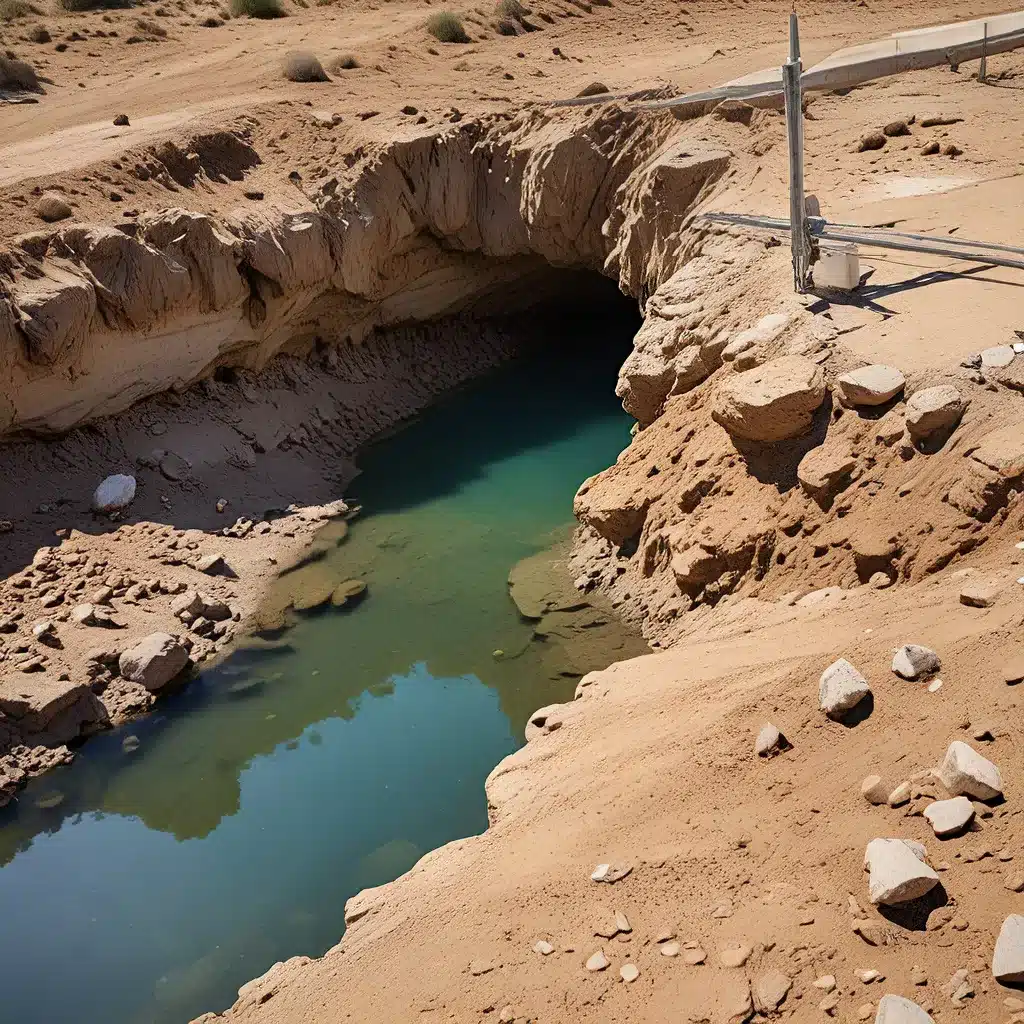
Unlocking the Potential of Subterranean Sensing
The Internet of Things (IoT) has revolutionized the way we interact with and monitor our environments, enabling unprecedented visibility and control over a vast array of physical systems. However, one area that has historically posed significant challenges for IoT deployment is the realm of subsurface monitoring – the ability to gather data and insights from below the Earth’s surface. From infrastructure inspections and resource management to environmental conservation and emergency response, the need for robust and reliable subsurface sensing capabilities has never been greater.
Fortunately, the rapid advancements in sensor technologies, wireless communication protocols, and data processing algorithms have paved the way for a new generation of innovative IoT solutions specifically tailored for subsurface applications. These cutting-edge systems leverage a diverse range of sensing modalities, from seismic and acoustic sensors to ground-penetrating radar and electrical resistivity tomography, to provide unprecedented visibility into the underground world.
Revolutionizing Infrastructure Monitoring
One of the primary applications of subsurface IoT is the monitoring and maintenance of critical infrastructure, such as roads, bridges, and utility networks. Traditionally, these inspections have relied on manual, time-consuming, and often disruptive techniques, such as visual assessments and invasive drilling. However, with the advent of sensor networks embedded within the infrastructure itself, engineers can now continuously monitor the structural integrity, detect early signs of deterioration, and prioritize maintenance efforts with unparalleled precision.
For example, sensors installed within concrete structures can detect the onset of corrosion or structural fatigue, alerting authorities well before visible damage occurs. Similarly, underground pipelines can be outfitted with pressure, flow, and leak detection sensors to identify and localize issues in real-time, reducing the risk of catastrophic failures and environmental damage.
Optimizing Resource Management
Beyond infrastructure monitoring, subsurface IoT is also revolutionizing the way we manage critical natural resources, such as groundwater, oil, and minerals. By deploying a network of geophysical sensors and smart wells, resource managers can gain unprecedented insights into the subsurface conditions, enabling more informed decision-making and sustainable extraction practices.
In the realm of groundwater management, for instance, IoT-enabled piezometers and soil moisture sensors can provide continuous data on water table levels, aquifer dynamics, and soil moisture content. This information can be used to optimize irrigation schedules, detect water table depletion, and inform long-term groundwater conservation strategies. Similarly, in the oil and gas industry, downhole sensors can monitor reservoir pressure, temperature, and fluid composition, allowing operators to fine-tune extraction processes and maximize resource recovery.
Enhancing Environmental Monitoring and Conservation
The ability to monitor the subsurface environment has far-reaching implications for environmental protection and conservation efforts. IoT-based monitoring systems can help researchers and policymakers better understand and mitigate the impact of human activities on sensitive ecosystems, from soil health and groundwater contamination to subterranean wildlife habitats.
For instance, underground sensor networks can detect changes in soil moisture, temperature, and chemical composition, providing early warning signs of environmental degradation or the potential for landslides, sinkholes, and other natural hazards. This information can then be used to inform land-use planning, habitat restoration, and disaster preparedness initiatives.
Overcoming the Challenges of Subsurface Sensing
While the potential of subsurface IoT is vast, there are several key challenges that must be addressed to ensure the widespread adoption and successful deployment of these technologies. One of the primary obstacles is the harsh and dynamic nature of the underground environment, which can pose significant obstacles to reliable data transmission and sensor longevity.
To overcome these challenges, researchers and engineers are exploring innovative solutions, such as low-power wireless communication protocols, energy-harvesting technologies, and advanced materials that can withstand the extreme temperatures, pressures, and corrosive conditions found below the Earth’s surface. Additionally, the integration of edge computing and predictive analytics capabilities within these subsurface IoT systems can help mitigate the impact of intermittent connectivity and enable more autonomous decision-making.
The Future of Subsurface Sensing
As the demand for comprehensive, real-time monitoring of the subsurface environment continues to grow, the future of subsurface IoT is poised to be increasingly crucial. With ongoing advancements in sensor technology, wireless communication, and data analysis, the ability to “sense the unseen” will become an indispensable tool for a wide range of applications, from infrastructure management and resource optimization to environmental protection and emergency response.
By leveraging the power of the Internet of Things, we are now able to unlock a previously untapped realm of information and insights, paving the way for a more sustainable, resilient, and informed approach to managing our underground world. As these technologies continue to evolve and become more widely adopted, the potential for transformative change in how we interact with and steward our subterranean environments is truly remarkable.
Conclusion
The integration of sensor networks and IoT technologies into subsurface monitoring applications represents a significant leap forward in our ability to understand, manage, and protect the underground world. From infrastructure inspections and resource management to environmental conservation and emergency response, these innovative solutions are poised to revolutionize the way we interact with and monitor the unseen realms beneath our feet.
As the IoT ecosystem continues to expand and evolve, the future of subsurface sensing is brimming with possibilities. By overcoming the unique challenges of the underground environment and leveraging the power of advanced sensing, communication, and data analysis capabilities, we can unlock a new era of sustainable, resilient, and informed decision-making that will have far-reaching impacts on countless aspects of our lives and our planet.
Whether you’re an infrastructure engineer, a resource manager, or an environmental steward, the advancements in subsurface IoT offer a glimpse into a future where the invisible becomes visible, and the unknown becomes known. By embracing these transformative technologies, we can build a more connected, efficient, and harmonious relationship with the world beneath our feet.